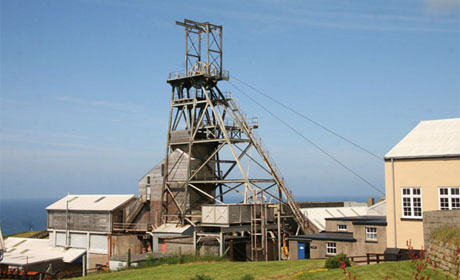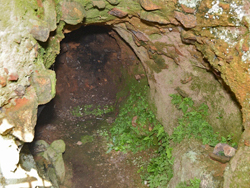Geevor Tin Mine
Cornwall, England

Cornwall was one of Europe’s earliest industrial regions, with a scattered industrial society. For hundreds of years, people in Cornwall have made their living from mining. As demand for tin rose and fell so did Cornwall's population. Mining communities were spread out among the small towns throughout the Cornish countryside. These mining areas have a strong sense of community and identity.

The greatest era of mining in Cornwall was the early 19th century, when Cornwall became the world’s leading supplier of copper. By around 1860 overseas suppliers had taken over, and tin became Cornwall’s most important metal export. Over the years, the ever-changing fortunes of the mining industry brought great prosperity for some, but great poverty for many others. From the earliest times until the final closure in 1990, the price of tin played a major role in the changing fortunes of the mine. This greatly affected the people and the landscape of the surrounding area.
Cornwall played a key role in the world-wide spread of hard-rock mining skills, and of steam-engine technology. Cornwall’s mineral wealth has been exploited for thousands of years and this has greatly shaped the landscape in many different ways. Geevor can currently only show our visitors a tiny fraction of what is beneath their feet. A huge network of tunnels and stopes runs from the top of the site beyond the road down to the sea. Originally the workings stretched far out below sea level.
Cornish Granite
 Granite and its associated minerals have underpinned the Cornish economy for hundreds of years. Igneous rocks like Granite were once molten and forced their way into and under rocks by their natural buoyancy.
Granite and its associated minerals have underpinned the Cornish economy for hundreds of years. Igneous rocks like Granite were once molten and forced their way into and under rocks by their natural buoyancy.
Granite rocks form deep underground as giant batholiths, which can be tens or even thousands of kilometres across. Even though granite forms deep underground, it is often seen on the surface because it has such a high quartz content which makes them really tough! This means that Granite rock can survive long after softer rocks around them have eroded away. The granite batholith under Cornwall is estimated to be 68,000 cubic kilometres!
Granite is a light coloured, speckled rock and is very ‘acidic’ – it has high silica content, in the form of quartz. They also contain soft black flakes of mica. The large crystals, feldspar, visible in Cornish granite indicate that it formed by cooling slowly deep underground, and then exposed by erosion of other surrounding rock.
Text: Geevor Tin Mine
Nominated by: Selection Committee